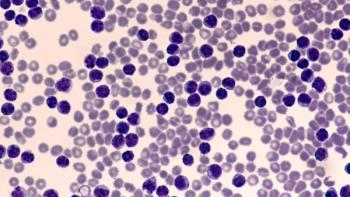
Final EMBARK Data Show “Almost Unprecedented” Reduction in Risk of Death With Enzalutamide Plus ADT in Biochemically Recurrent Prostate Cancer
Stephen Freedland, MD, highlighted data showing significant overall survival benefits in the EMBARK trial and discussed the continued role of monotherapy in preserving quality of life for select patients.
Final data from the phase 3 EMBARK trial presented at the European Society of Medical Oncology (ESMO) Congress 2025 confirmed that enzalutamide (Xtandi; Astellas, Pfizer) plus androgen deprivation therapy (ADT) significantly improves overall survival in patients with high-risk, biochemically recurrent prostate cancer. In an interview with Pharmacy Times, Stephen Freedland, MD, discusses the trial’s key findings, including the 40% reduction in risk of death with combination therapy and how monotherapy may still offer quality-of-life advantages for certain patients.
Q: Could you summarize the key efficacy findings from the final EMBARK data, particularly regarding overall survival, and how these results compare with earlier endpoints such as metastasis-free survival?
Stephen Freedland, MD: Yeah. So the question is, what are we presenting tomorrow, and how does that relate to what we previously presented?
Just as a brief overview, EMBARK was a global phase 3 trial in patients with high-risk, biochemically recurrent prostate cancer who had negative conventional imaging. These patients, we know, if we do nothing, are at risk of developing metastasis quickly and ultimately dying of their disease.
They were randomized to ADT [androgen deprivation therapy] plus enzalutamide versus ADT alone versus enzalutamide alone. This was the first time ever in a phase 3 trial that an androgen receptor pathway inhibitor—enzalutamide in this case—was studied in this population.
What we previously reported in The New England Journal of Medicine led to FDA and EMA approval around the globe in many places. Those earlier results showed that enzalutamide, either with or without ADT, delayed progression to metastasis or death—also known as metastasis-free survival (MFS)—a surrogate of overall survival. Both are bad outcomes we want to avoid in our patients: metastasis or death. So, we keep them alive longer without their tumor spreading.
What we found with continued follow-up is that the combination of ADT plus enzalutamide led to a 40% reduction in the risk of death—really an almost unprecedented benefit in terms of overall survival. Enzalutamide monotherapy showed a 17% lower risk of death, but this did not reach statistical significance.
Q: The EMBARK trial evaluated both combination therapy and enzalutamide monotherapy. How did outcomes differ between those arms, and what clinical implications might that have for treatment selection?
Freedland: Yeah. If we look at overall survival, the combination has a statistically significant, clinically meaningful 40% reduction in the risk of death. Monotherapy was not statistically better than ADT alone—17% reduction, but not significant.
If we look at secondary outcomes—time to next therapy, time to skeletal-related events, or time to progression on the next line of therapy (typically called PFS2)—both enzalutamide plus ADT and enzalutamide alone met those endpoints, with a somewhat stronger signal in the combination than the monotherapy.
It’s exciting that we have two options for our patients. I think the data tell us pretty clearly that enzalutamide plus ADT is more effective at tumor control and prolonging survival. But monotherapy still has benefits—many secondary outcomes were met, and metastasis-free survival improved, even if overall survival did not.
Monotherapy also has some quality-of-life advantages, including better preservation of sexual activity, which is going to be really important for some patients. So, I think there will still be a role for monotherapy, but the strongest data we have are clearly in the enzalutamide plus ADT group.
Newsletter
Stay informed on drug updates, treatment guidelines, and pharmacy practice trends—subscribe to Pharmacy Times for weekly clinical insights.




















































































































































































































